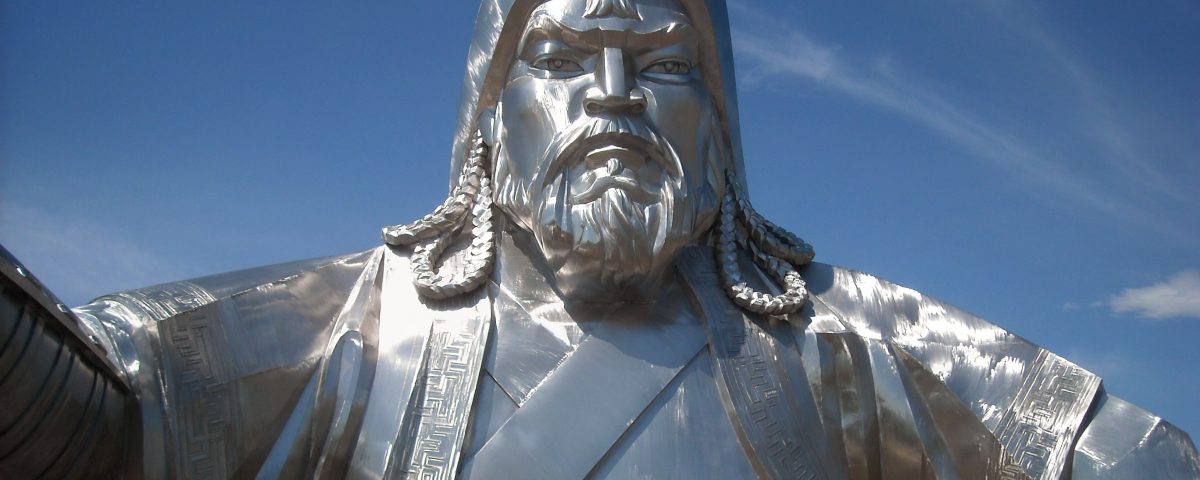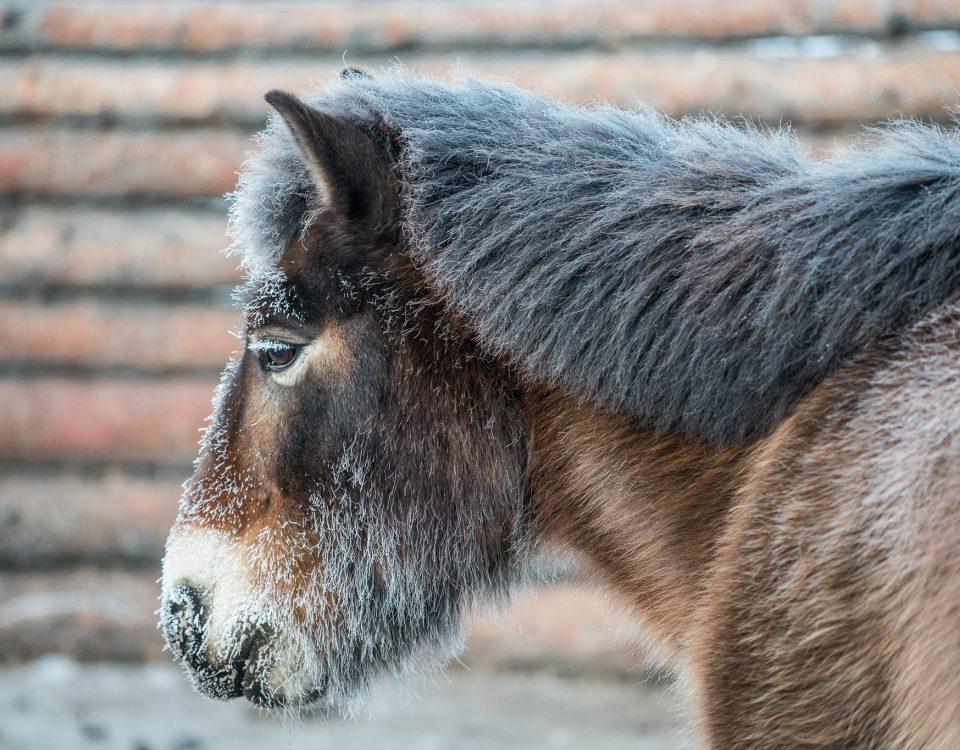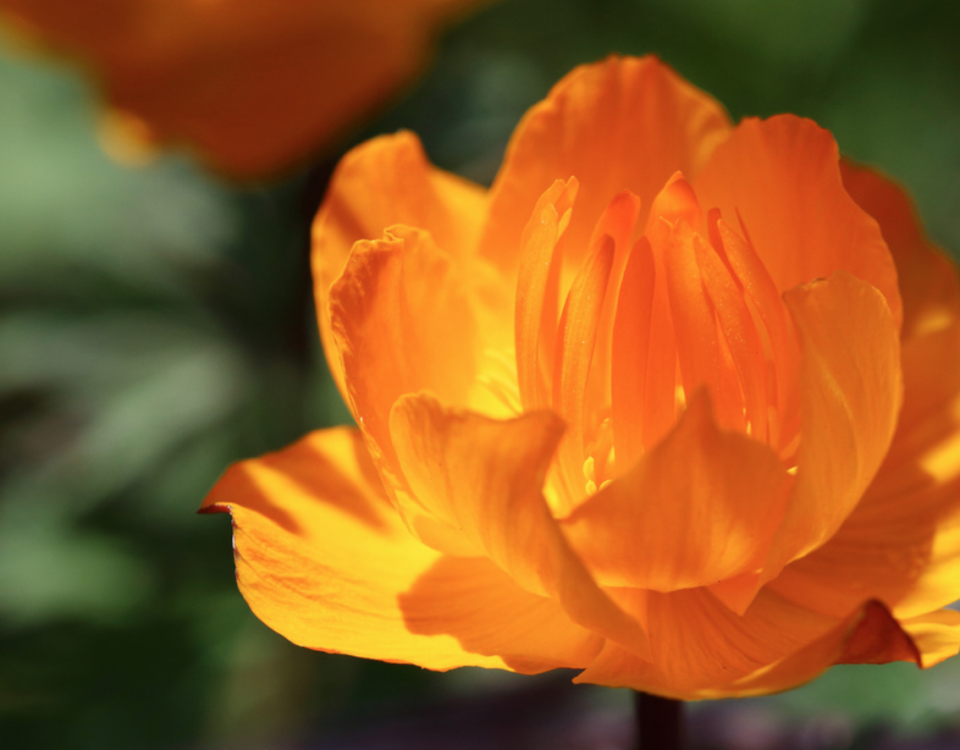Discover Genghis Khan’s Legacy In Mongolia: Destinations To Explore

Helping Mongolia’s Wilderness: Our Annual National Park Community Clean-Up
October 24, 2023
Do Good Friday
November 24, 2023Discover Genghis Khan’s Legacy In Mongolia
Travellers are often drawn to Mongolia to learn about Genghis Khan, the founder and leader of the Mongol Empire, and his legacy and its profound historical significance. Known in Mongolia as Chinggis Khan, his conquests alongside his descendants shaped the thirteenth century, triumphing over some of the most densely populated civilizations of the time. At its zenith, this empire sprawled across an astonishing 11 to 12 million contiguous square miles, holding the distinction of being the largest contiguous land empire in history. His influence was vast, impacting military strategy, governance, cultural exchange, and the course of history in ways that continue to resonate to this day. We suggest you take time to discover Genghis Khan’s legacy in Mongolia as it provides a unique opportunity to delve into the fascinating narratives of one of history’s most influential figures. Here’s our concise guide to unlocking the layers of his legacy:
Sukhbaatar Square, Ulaanbaatar
Mongolia’s Parliament Building (the Great Khural – Mongolia’s equivalent of the Supreme Soviet) is fronted by a monument dedicated to Chinggis Khan (centre), Ogodei Khan (west), and Kublai Khan (east). Chinggis Khan is flanked by two of his most loyal generals, Bo’orchu and Mukhlai.

The Chinggis monument contains earth and stones from the holy and historic places in Mongolia associated with Chinggis Khan’s rule. At the unveiling, the then President of Mongolia, Nambaryn Enkhbayar, declared ‘May the spirit of the Great Chinggis Khan inspire the future of the Mongolian people and lead it once again to prosperity.’ It was designed to be finished for the 800th anniversary of the Mongolian State, as declared by Chinggis Khan.
Experience Chinggis Khan’s Birthday
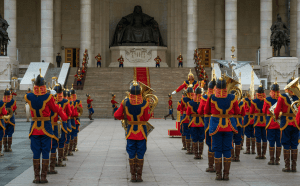
Chinggis Khan is known to have been born around 1162. The year is an estimate, the day and month unknown. But Mongolia celebrates Chinggis Khan’s birthday on the first day (new moon) of winter in the Mongolian Lunar Calendar although as a celebration it is still in its infancy – 2012 was the first year in Mongolia’s modern history that the country celebrated the event on a national level. Key representatives from the government, the military, sports, arts, and herders pay tribute to the statue of Chinggis Khan in central Sukhbaatar Square in Ulaanbaatar. The Chinggis Khaan Order is also given – an award honouring the most outstanding national figures who have contributed greatly to the development of Mongolia. Recipients include the rock group The Hu, the Baritone opera singer Ariunbaatar Ganbaatar who won the coveted Song prize at BBC Cardiff Singer of the World and first prize at the XV International Tchaikovsky Competition, and Mend-Ooyo Gombojav – a Mongolian writer, poet and calligraphist.
Chinggis Khan Equestrian Statue
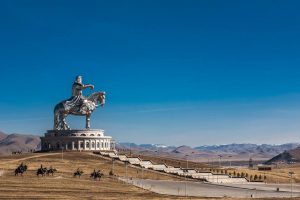
The Chinggis Khan Equestrian Statue stands as an impressive tribute to one of history’s most legendary figures, offering visitors a unique experience. Standing 131 feet tall over the surrounding countryside, this colossal statue embodies the spirit of Chinggis Khan and is said to mark the spot where he once found the golden whip that initially inspired his quest to unite all of Mongolia’s nomadic tribes. Visitors can marvel at its impressive height, depicting the warrior on horseback, symbolizing strength, leadership, and the nomadic heritage of Mongolia. Exploring this monument provides not only a chance to delve into Mongolian history but also offers breathtaking panoramic views from the top, allowing you to appreciate the vastness of the surrounding countryside.
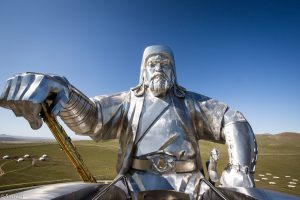
Chinggis Khan Museum

Image from https://chinggismuseum.com/
The new Chinggis Khan Museum in Ulaanbaatar stands as a testament to Mongolia’s history. Covering eight floors, the museum covers more than 2,000 years of Mongolian history through an impressive collection of over 11,000 artifacts, with an astounding 92% being original pieces. With state-of-the-art technology and engaging presentations, now including a virtual room depicting the Mongol Empire in the 13th century, the museum provides an enlightening experience, making it a must-visit destination for history enthusiasts, cultural explorers, and anyone wishing to discover the legacy of Genghis Khan in Mongolia.
Explore Khentii Aimag

The best location to discover Genghis Khan’s Legacy In Mongolia is Khentii Aimag (province). Khentii – where Chinggis Khan was born, raised, crowned, and is believed to be buried – has been held in high esteem by Mongolians for centuries. If visiting the region, make sure to arm yourself with a copy of Mongolian Professor Urgunge Onon’s translation of the Secret History Of The Mongols – a chronicle of Chinggis Khan’s life and the most important literary and historical work of Mongols from ancient times.
If you would like to join us, our In The Footsteps Of Chinggis Khan experience combines history, culture, and the living heritage that connects us to Chinggis Khan’s legendary past.
Jess @ Eternal Landscapes


